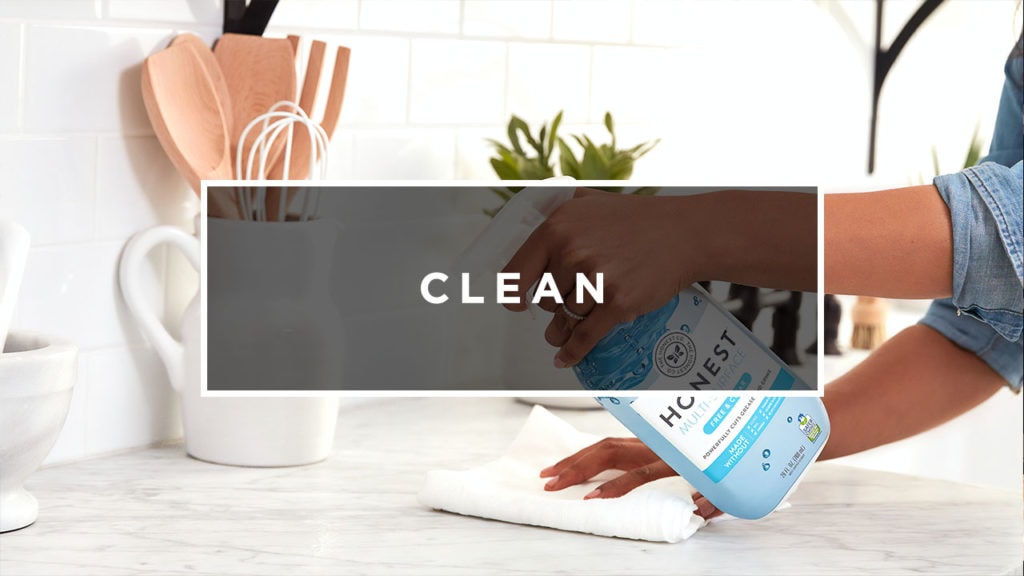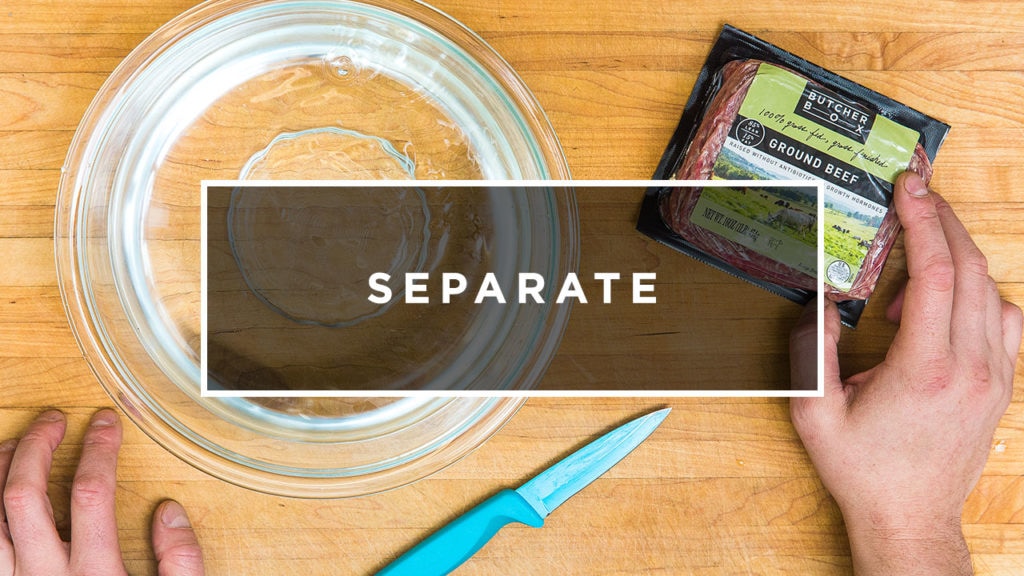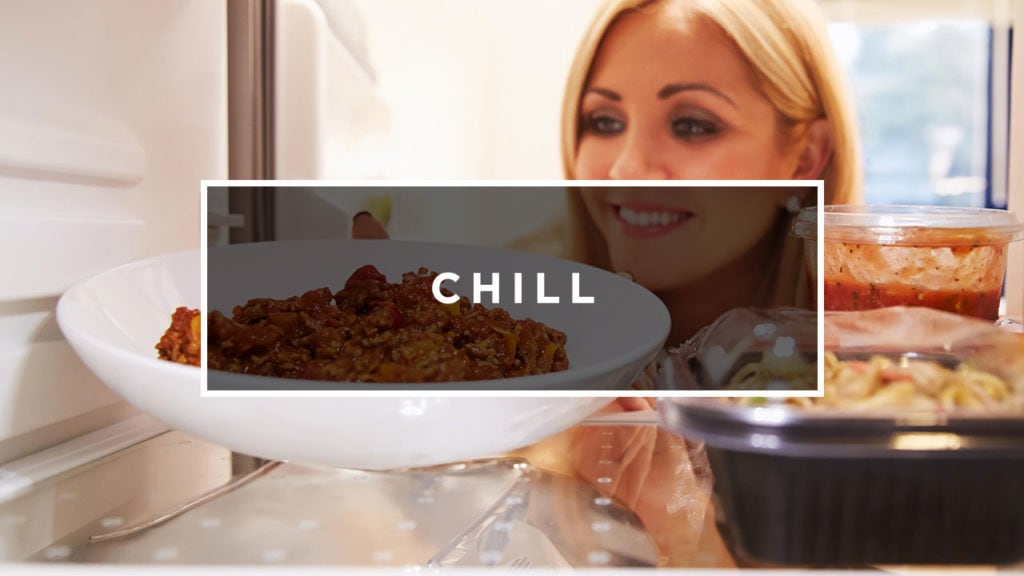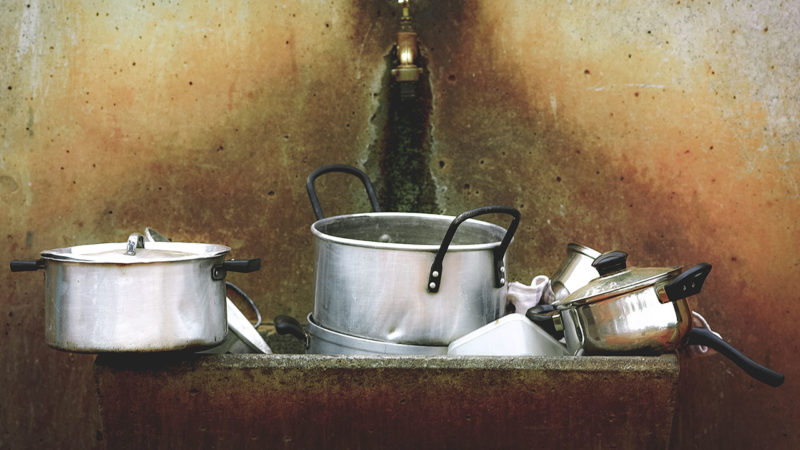We use seatbelts when we’re in the car. Helmets when we’re on bikes. Sunscreen when we’re outside.
Some of life’s safety habits have become so ingrained in our day-to-day routines, we aren’t even aware of them.
I’m here to help you make sure these precautions extend into the kitchen, so you can make sure you’re serving safe food. Because the last thing we want to do when we’re cooking is accidentally put people at risk for foodborne illness or food poisoning.
There might not be a special tool or object like a seatbelt to make sure you’re safe in the kitchen (besides pot holders, of course), but there is a simple set of rules you can follow. The FDA, a major authority on food safety education, has recommended guidelines for cooking and handling food. They’re divided into four key areas: Clean, separate, cook, and chill.
Fasten your seatbelts and let me break them down for you!
Rule #1: Keep it Clean

A clean kitchen is a safe kitchen, and a safe kitchen is your starting point for amazing meals. It all comes down to the surfaces you’re using—especially cutting boards.
I like to use two different cutting boards: A plastic one for raw proteins and a wooden one for everything else. If you don’t have two cutting boards, don’t worry. It’s totally fine to use one—just make sure you sanitize it between every use. As an extra safety precaution, I like to save raw meat for last. That ensures it’s not coming in contact with veggies or other ingredients.
Clean cutting boards are key, but there are other areas in the kitchen we can’t forget. Think countertops, spigots, soap dispensers, drawer handles, the refrigerator door—anything that comes in contact with our hands or the food while we’re cooking should be sanitized. When I’m washing up with hot soapy water, or in between using raw proteins, I like to clean every surface I touched with a sanitary wipe. Super easy!
Rule #2: Separate the Proteins

As much as you might want to save space and slide that bagged salad on top of the tray of St. Louis style ribs you’re defrosting—don’t! It’s important to keep different types of meat separate from one another and other food items, starting in the refrigerator during defrosting. Chicken, beef, pork, seafood, etc., should all be stored on separate pans or in their own ziplock bags in the fridge. I also recommend reserving the lowest possible shelf for your proteins.
As we covered earlier, it’s also a good idea to use separate cutting boards (or sanitize one thoroughly) for different types of proteins and other ingredients.
Rule #3: Cook with Confidence

Cooking with confidence means staying out of the danger zone. This is the place where harmful bacteria are alive and well. The danger zone can be a scary place, but as long as we take a few steps to avoid it, everything will be just fine!
According to the FDA, the danger zone is the area between 41°F and 140°F. If we stay below 41°F, bacteria will be inactive, and if we stay above 140°F, bacteria will be dead. So, our goal is to get through the danger zone as quickly as possible when we’re cooking.
When it comes to cooking steak, in particular, the outer surface is the place where bacteria grow. That’s why we can comfortably cook a steak to rare or medium-rare as long as there’s a nice sear on the outside. Looking for more steak-cooking tips? Check out my “knowing when it’s done” blog post for all of the juicy details.
For ground beef and other proteins, we definitely want to make sure we cook to an internal temperature of at least 140°F and rest for three minutes or longer. Remember, a food thermometer is your friend.
For those of you wondering about things like immersion circulators that let you cook food at a lower temperature, the answer here is time. Bacteria will actually die, but it just takes longer, so be sure to do a little research before diving in.
Rule #4: Just Chill

We’re not out of the danger zone just yet. It applies to chilling food just as much as it applies to cooking. The idea is to keep food that’s not being cooked below 41°F, or to get it there as quickly as possible.
The FDA recommends a maximum of two hours going from 140°F to 70°F, and a maximum of four hours going from 70°F to 41°F. That means you should start to chill your food as quickly as you can when you’re finished cooking. This is where the fridge does its magic!
Rule #5: Have Fun
I know I said there are four key points, but I had to add this last one in here.
Unfortunately, food safety is a hot topic in the news today. We can’t control what happens with food products in restaurants, grocery stores, and delis throughout the United States, but we can control what happens in our own kitchens.
While food safety is a serious topic, it doesn’t have to distract from the fun of cooking. Once you follow the basic rules for safe cooking and food handling, they’ll become second nature—just like buckling your seatbelt. Now go be safe out there!
Yankel Polak is the Head Chef at ButcherBox.



